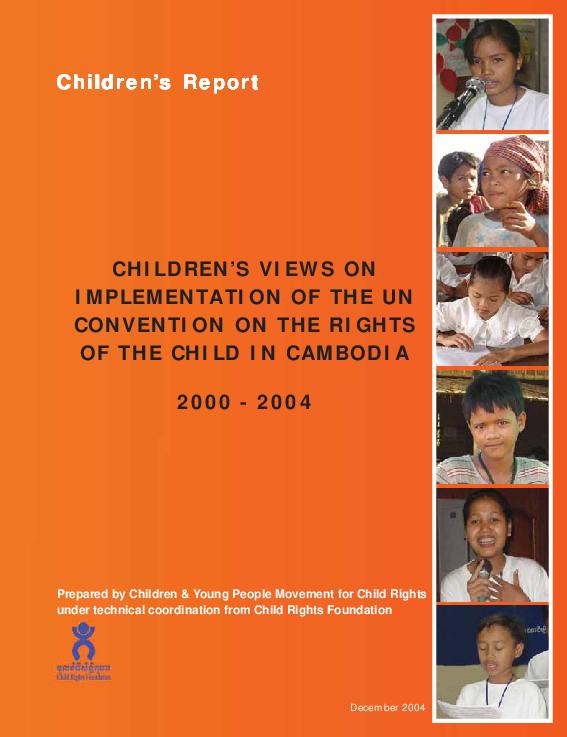
Children’s views on implementation of the UN Convention on the Rights of the Child in Cambodia 2000-2004
Publication year:
2004
English
Format:
pdf (519.1 KiB)
Publisher:
CRF, Child Rights Foundation,CYPMCR, Children & Young People Movement for Child Rights
The Children and Young People Movement for Child Rights (CYPMCR) in Cambodia has produced the children’s report on the implementation of the Convention on the Rights of the Child for the UN Committee on the Rights of the Child. CYPMCR is a network of children and youth created in 2002 by nine children and youth led organisations/clubs. This report raises six key issues to be checked and evaluated – education, health, drugs, child labour, trafficking and child sex exploitation, and children’s participation. In order to allow as many children as possible to express their views, CYPMCR surveyed children in primary and junior high schools in 16 (out of 24) provinces and municipalities across the five regions of Cambodia. In total, more than 5,000 children aged 12-18 years were surveyed. In addition, a 3-day national children conference on “Child Participation in Monitoring the Implementation of the UNCRC in Cambodia” was held in Phnom Penh in 2004, in which 74 children from 24 provinces and municipalities participated.The purpose of the conference was to facilitate a meaningful child participation process in the assessment of the progress made by the Cambodian Government, to seek
children’s input and recommendations and to support the children reporting on the preparation of the report. The 74 child participants were students and child rights activists, child victims, vulnerable children, disabled and minority children fromthe rural areas and suburbs. In the wake of these activities, the Royal Government of Cambodia took actions and has made some strong efforts to help develop and protect children from all forms of exploitation, trafficking, abuse and violence. The measures included increased access for children to basic education, paying more attention to health and nutrition, increased attention to HIV/ AIDS and to protecting children, increasing the budget for the education and health sectors, adopting national and international laws, signing a memorandum of understanding with neighboring countries and organising national plans
Read full abstract
View & Download
Document information
Format
Country
Rights
© Author/Publisher
Found a mistake? Help us improve!
If you have noticed a document assigned to the wrong author or any other inaccuracies, let us know! Your feedback helps us keep our data accurate and useful for everyone.
Share
Link
